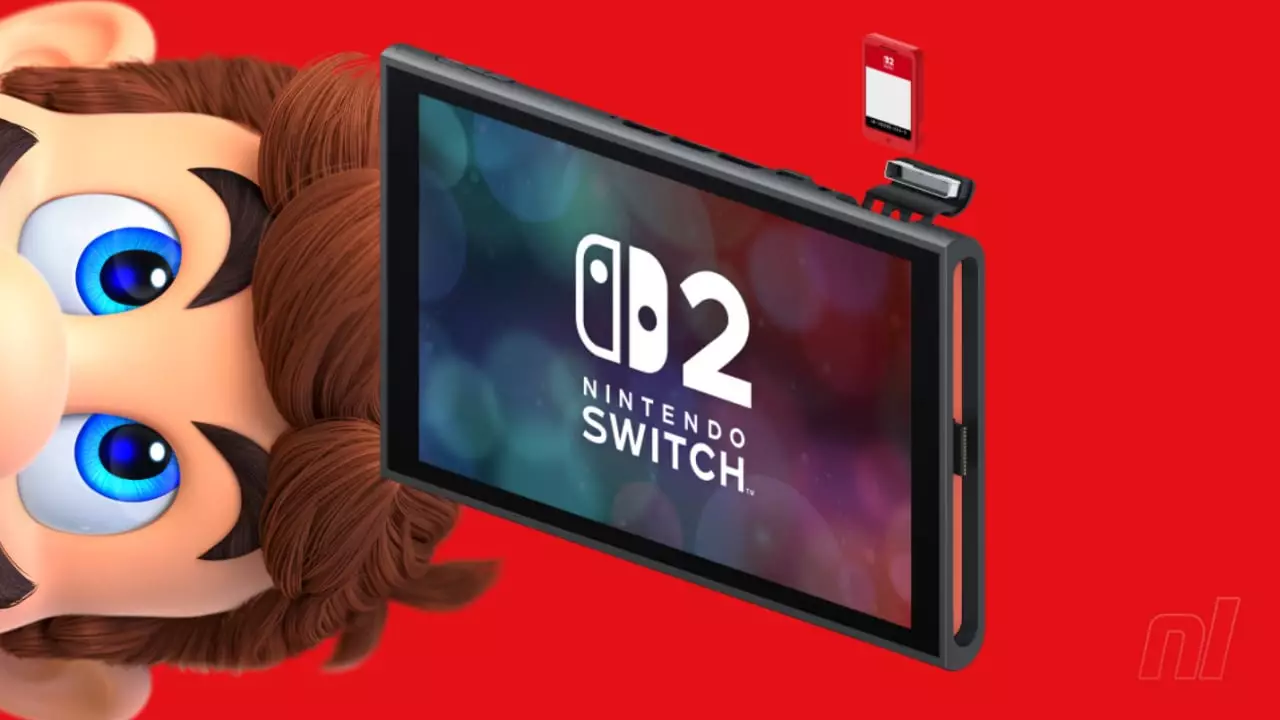Nintendo has once again stirred the pot with its recent announcement regarding the Switch 2’s Game-Key Cards. Despite the lack of fanfare during the highly anticipated Switch 2 Direct, this new purchase option has made its way to Nintendo’s website, generating a mix of intrigue and disappointment among gaming enthusiasts. The premise is straightforward: a physical card that serves as a key to download the game digitally, allowing players to experience new titles without the need for traditional cartridges. However, dig a little deeper and you’ll find that this move may be more about opening the gate to frustration than it is about innovation.
The Underwhelming Concept of Game-Key Cards
At its core, the concept behind Game-Key Cards is deceptively simple. Gamers are provided with a cartridge-like item that doesn’t actually contain the full game data, but instead unlocks a digital download when inserted into the console. The notion of having to connect to the internet to access the entire game undercuts the very essence of owning a physical copy, a practice that has been cherished by physical game collectors since the dawn of gaming.
What makes this situation even more frustrating is that while many gamers are accustomed to downloading large patches on launch day, this model seems to take that approach to an unwelcome extreme. Rather than offering at least a modest slice of the game data directly on the cartridge, Game-Key Cards could end up delivering the bare minimum, forcing players to endure the inconvenience of waiting for potentially sizable downloads in order to enjoy their new game.
A Blurry Line Between Digital and Physical
There seems to be a significant philosophical shift at play here. The distinction that used to exist between physical and digital games is becoming increasingly hazy, with Game-Key Cards sitting uncomfortably in the middle. Nintendo’s rationale may be to streamline the production process for third-party developers by eliminating the need for extensive cartridge manufacturing. However, gamers are left with a nagging sense that they are being shortchanged. Instead of holding a traditional copy of a game that promises physical ownership, consumers are instead greeted with a code-in-a-box that lacks the integrity and warmth of a complete package.
This amalgamation of digital and physical formats raises significant questions. Is this simply a cost-saving measure designed to minimize retail inventory, or are they genuinely trying to cater to a technological shift? Either way, the outcome appears to dilute the experience, instead of enhancing it.
The Inadequate Justification for a Complicated Experience
One might wonder what Nintendo envisions as the primary advantage of this hybrid model. Do they anticipate that the novelty of a physical card that serves merely as a key will resonate with consumers? A cursory glance at the philosophy behind physical game ownership reveals a deeper relationship between players and the product. Gamers appreciate the tactile experience of placing a cartridge in their console—not to mention the visual thrill of a full shelf of games. Game-Key Cards, however, seem to forsake all that for a less rewarding experience characterized by internet dependency.
Moreover, it seems misguided to assume that the mere presence of a physical item would reassure gamers of ownership. This concept can lead to profound discontent when users are left with a half-finished product that demands an online connection to come to life. And in an era of rapidly fluctuating internet accessibility and reliability, relying on a connection to deliver a complete gaming experience feels like a shaky gamble.
The Future of Gaming Ownership: A Crossroads
In the end, Game-Key Cards seem like an insufficient attempt to appeal to both digital convenience and physical authenticity. If gaming continues to lean towards models that prioritize immediate digital access while undercutting the fulfillment of owning a complete physical copy, consumers may find themselves caught in a frustrating limbo.
In a world where gaming has captivated millions, the allure of ownership and the tactile joy of physical collections should not be easily dismissed. Nintendo has an opportunity here, but if the company continues down this path, it risks isolating its passionate fanbase in favor of a model that lacks transparency and value. Only time will tell if this complicated marriage of digital and physical will resonate or if consumers will demand something more aligned with their expectations.


Leave a Reply